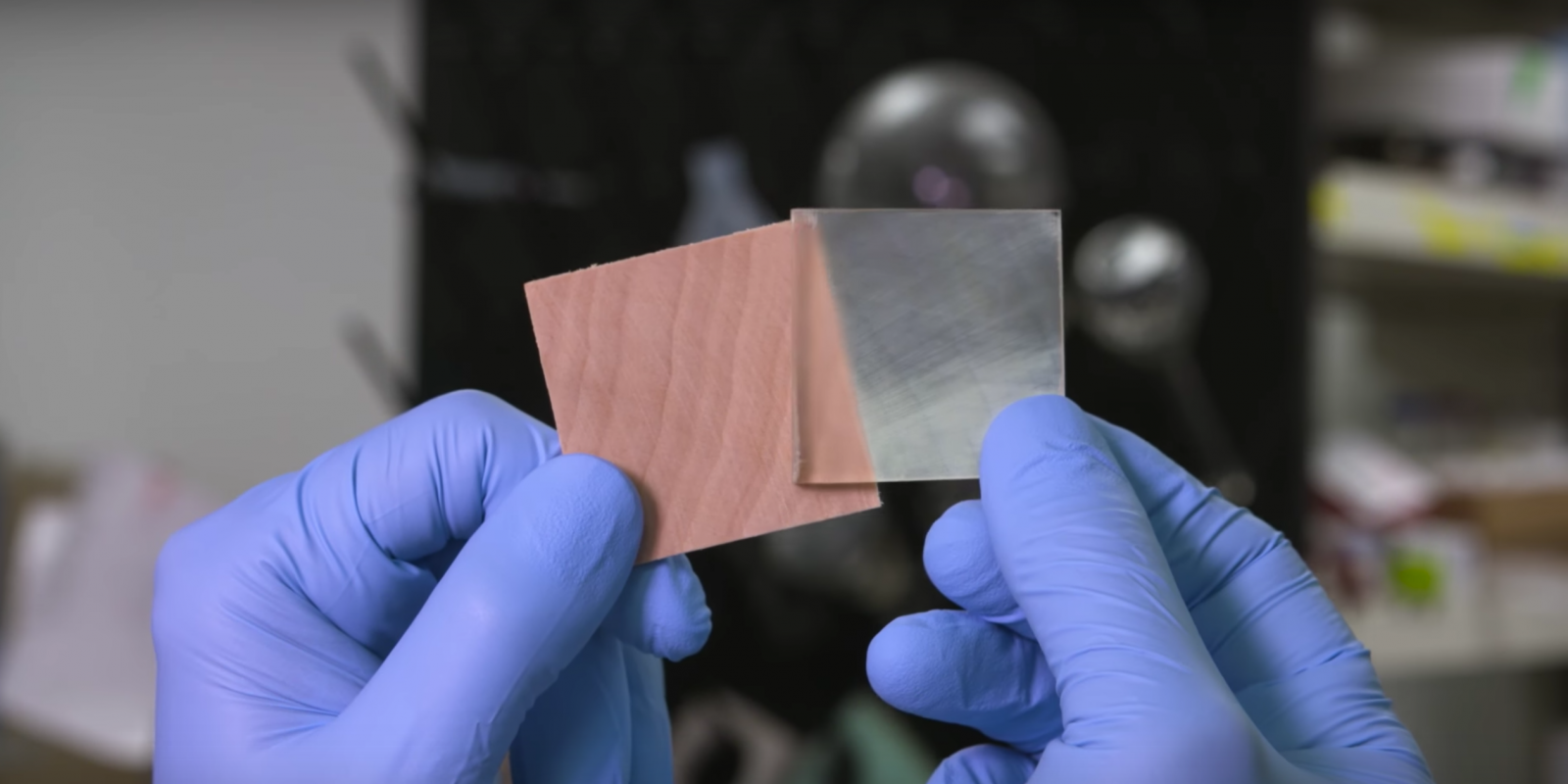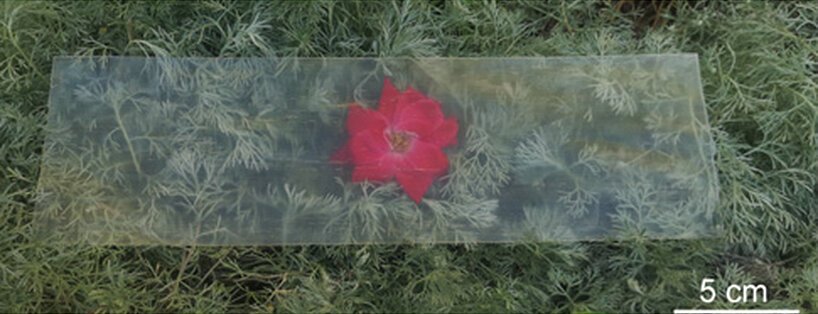Let me be transparent, the production of glass consumes way too much energy. Which is why scientists are looking at another material that’s more environmentally sustainable, timber.
A team from the University of Maryland are developing a way to make transparent wood with minimal use of energy and chemicals. While this product in particular isn’t something new, they are focusing on optimizing the process to ultimately be more efficient and eco-friendly. Earlier methods generally consumed large amounts of harmful chemicals and energy, weakening the the structure of the material.
According to the team’s research, their approach to creating transparent wood involves “solar-assisted chemical brushing.” In order to modify the chromophores so the material doesn’t absorb light, they apply a simple solution of hydrogen peroxide or bleach. After this process the color of the wood has changed to completely white. Finally, an epoxy resin is applied to reduce light scattering, resulting in an optical transparency.
The bulk of energy consumed in glass production comes from natural gas combustion used to heat furnaces to melt raw materials. It was reported in 2013 that “natural gas use at glass manufacturing facilities in 2010 was 146 trillion Btu, about 143 billion cubic feet.” While it’s been over a decade since then, who knows how much energy we continue to take up to make glass.
This new development definitely has the potential to become a material of the future. It’s cost-effective and could stand as a candidate for sustainable architecture. By brushing the solution onto the wood, it also creates opportunities for unique designs and decorations.
Other POP! stories you might like:
8 Low maintenance plants for beginner plantitos and plantitas
This eco-friendly app can help reduce single-use water bottles, here's how
Green cleaning: Healthy and Eco-friendly ways to clean and disinfect
Save money and the environment with these zero-waste cooking tips
Planet discovered by teenage NASA intern looks like a BTS album cover





